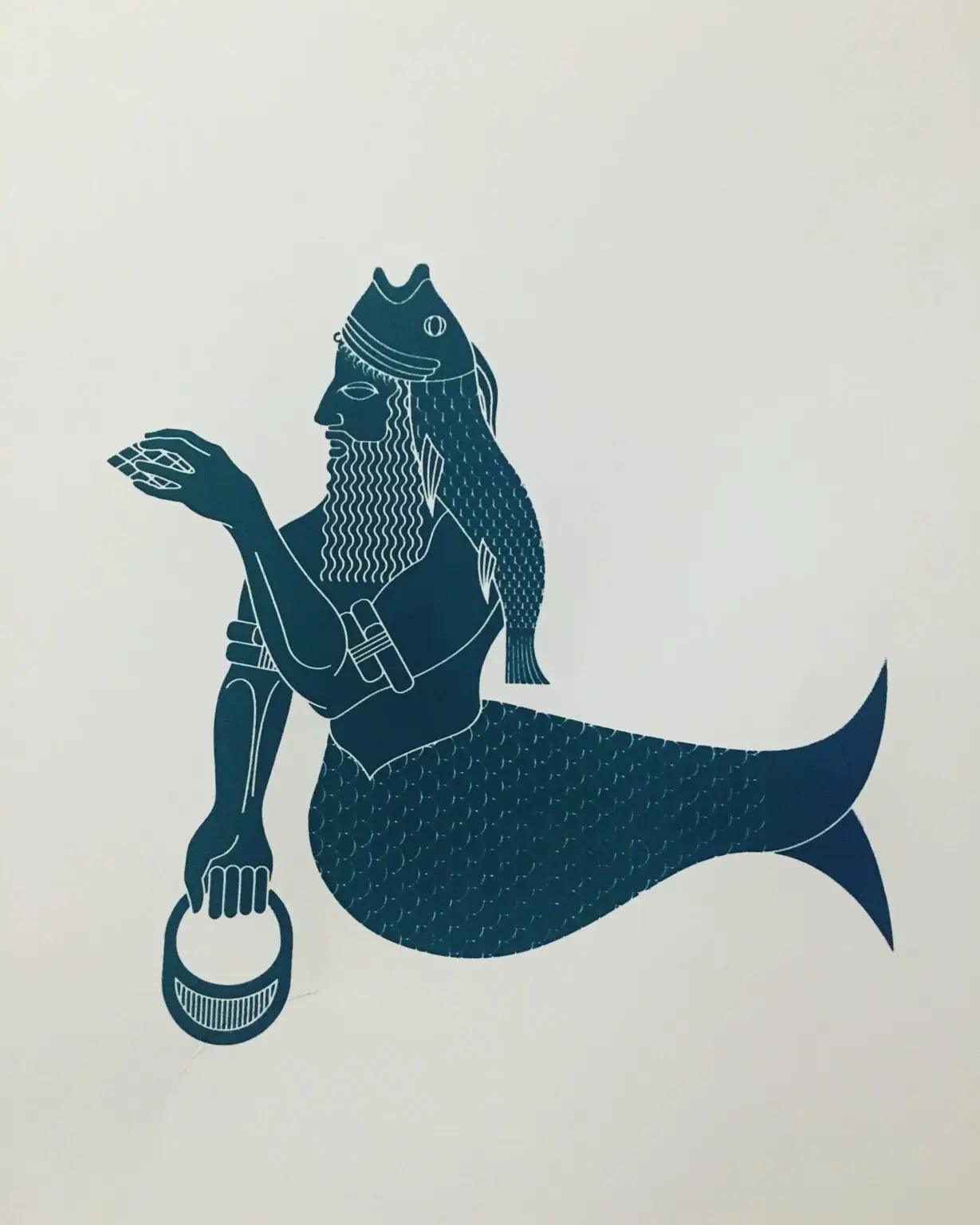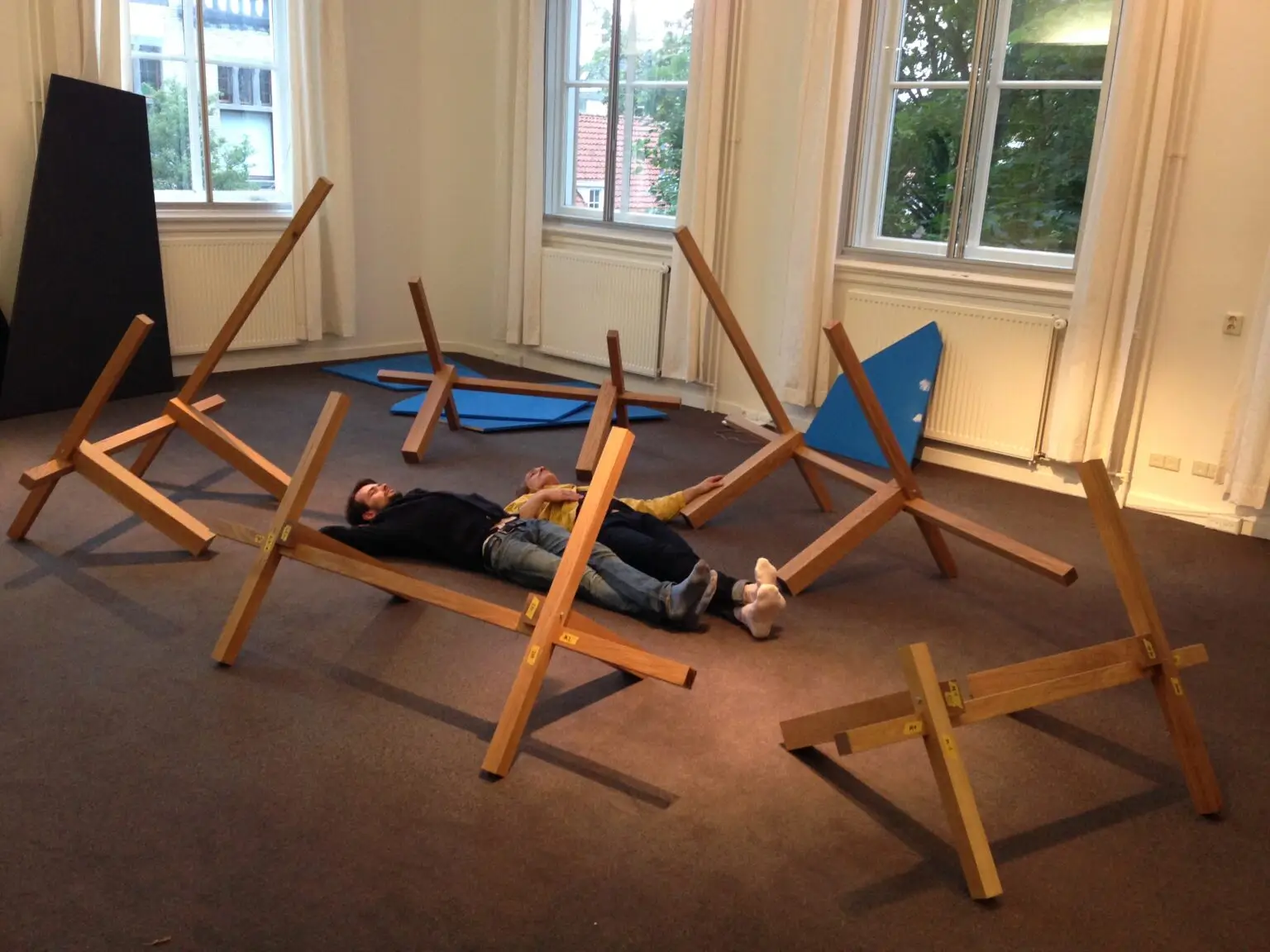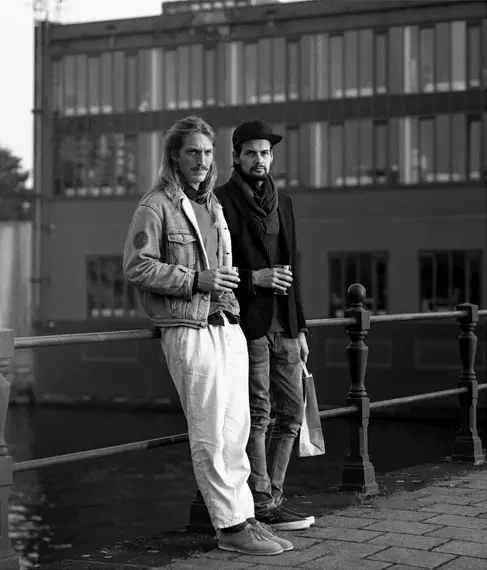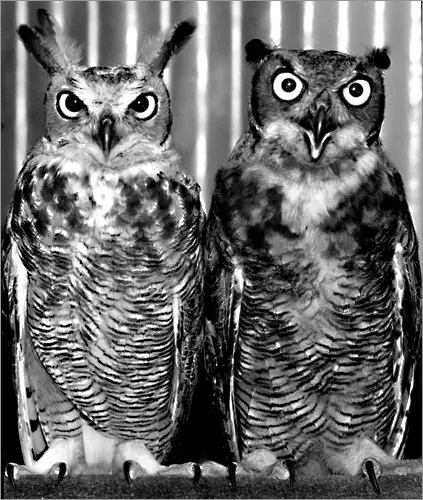ABOUT US
Since 2011 we (Erasmus Scherjon and Gero Asmuth) collaborate as Studio Erasmus+Gero. Together we have faced a number of exciting design challenges across different contexts, ranging from material research and experimentation in the studio to commercial, institutional and private commissions for the design of objects, events and scenographies outside of it. Collaboration is an integral part of our work. We are used to working together, since we are a design duo, but also regularly find ourselves working in collaboration with other artists and designers in the context of large collective projects where many different design approaches and skill sets meet. The result of this is, more often than not, that the final outcome goes beyond what could have been predicted, planned or designed beforehand, and far exceeds the know-how of individual makers in terms of technical quality, ingenuity and artistry. Working with others drives the experiment forward, not unlike working with new materials and techniques does. In that sense our work can be described as an ongoing research of material and social possibility, brought together according to the ethos that experimentation leads to production, and production leads to experimentation.

A key aspect here is that we produce all of the work ourselves. No matter the type of tools we use – be it hand tools, power-tools, digital design tools or computer-aided manufacturing tools – we are convinced that ingenuity comes from a close relationship to technique and the capability of interpreting what a specific technique has to offer at a specific stage in the making process. In our work ideas, design, material and technique do not adhere to a specific order. Sometimes a material leads to a design, sometimes a design leads to a new technique. Keeping the production close to home, rather than outsourcing production work, allows us to discover unexpected material possibilities, languages of form, as well as social realities that come with production. It allows us to develop an approach to design that has the discursive qualities needed to interact with the material cultures that shape understanding of the world.

Traditional techniques can be reinterpreted by newer ones, modern methods can be questioned by their ancient counterparts. There is no certain order to plan and outcome, something that a craftsman/ craftswomen knows all too well. On paper the wood joint always fits, whereas in reality no such thing exists as a perfectly straight plane or a perfectly smooth surface – the kind you would find on a 3D model, for example. While some strive to turn their ideas straight into flawless, predictable outcomes – as it is the case for those who subscribe to the ethos that industrial manufacturing is somehow at odds with the applied arts, as it was at the turn of the 20th century – we prefer an approach that is less linear in its thinking. It’s the circularity of ideas and the risk and unpredictability of the making process that sparks the possibility for contemporary work and discourse, no matter the tools used – old, new, digital, analog or all combined. Staying in close relationship to those tools, or ‘self production’ as we call it, is at the heart of our practice: it’s where we discover new things, meet new people, learn, stay engaged with what we and others do and feel that we are part of a long tradition of making.


STUDIO ERASMUS+GERO
[email protected]
…we can mostly be found in:
Amsterdam (NL)
Luzern (CH)
Brussels (BE)
and Cologne (DE)